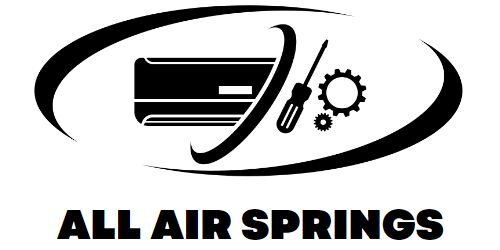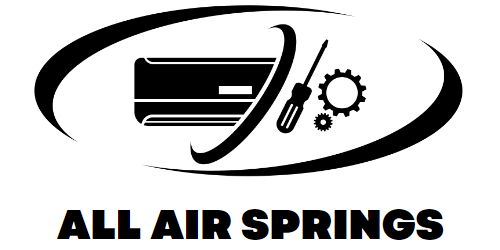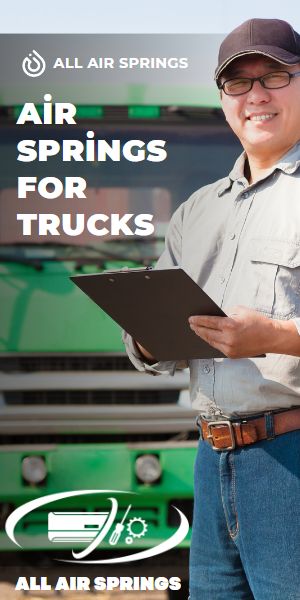
Essential Guide to Truck Mirrors: Types, Safety, Maintenance, and Future Trends
Introduction to Truck Mirrors
Truck mirrors are essential components of any commercial vehicle, playing a critical role in ensuring both safety and efficiency on the road. They provide truck drivers with the necessary visibility to navigate highways, city streets, and parking lots while avoiding collisions and accidents. Without proper mirrors, drivers would be unable to see their surroundings, increasing the risk of blind spots and poor judgment.
Mirrors also help trucks meet safety regulations, as clear visibility is required by law for commercial vehicles. From preventing accidents during lane changes to assisting in parking, truck mirrors are a key feature that directly impacts driver awareness.
There are various types of mirrors used in the trucking industry, each serving a unique purpose. Understanding these different types is crucial for truck owners and drivers to make informed decisions about their vehicle’s safety and performance. In the following sections, we’ll dive into the different kinds of truck mirrors, their role in safety, and how to maintain them properly to ensure they continue functioning effectively.
Types of Truck Mirrors
Truck mirrors come in various types, each designed to serve specific purposes and improve driver visibility in different driving conditions. Choosing the right type of mirror is essential for safety and ease of operation. Below are the most common types of mirrors used in the trucking industry:
-
Side Mirrors
: These are the standard mirrors attached to the side of the truck, providing the driver with a clear view of the road behind and beside the vehicle. They are crucial for lane changes, merging, and checking blind spots.
- Convex Mirrors: Convex mirrors are curved to give a wider field of view. These are often used in areas where visibility is limited, such as blind spots and tight corners. They are also frequently installed on trucks to enhance rear visibility, especially for larger vehicles.
- Blind Spot Mirrors: These mirrors are small and mounted on the larger side mirrors to help eliminate blind spots. They offer a clear view of areas that side mirrors alone can’t reach, particularly useful for changing lanes and making turns.
- Flat Mirrors: Sometimes used in addition to convex mirrors, flat mirrors provide a straight, unwarped view and are often preferred when precise rear visibility is needed for maneuvering large vehicles in crowded spaces.
Each of these mirror types plays a vital role in enhancing safety and making it easier for truck drivers to navigate the roads, especially in high-traffic environments. Choosing the right mirrors ensures maximum visibility and can help prevent accidents.
The Role of Truck Mirrors in Safety
Truck mirrors play a critical role in enhancing safety for both the driver and other road users. Properly adjusted and maintained mirrors are essential for eliminating blind spots, improving visibility, and reducing the likelihood of accidents. With their help, truck drivers can navigate busy highways, crowded urban streets, and tight parking spaces with confidence.
Mirrors provide drivers with a comprehensive view of their surroundings, allowing them to make informed decisions when changing lanes, merging, or reversing. In particular, side mirrors and convex mirrors help drivers see vehicles approaching from behind or alongside, reducing the risk of side-impact collisions.
Statistically, blind spots are responsible for a significant number of truck accidents. According to research, blind spots are a leading cause of collisions during lane changes, especially on highways where trucks share the road with smaller vehicles. Mirrors help minimize these blind spots by giving drivers the ability to spot other vehicles, cyclists, or pedestrians who may be out of direct sight.
In many countries, truck mirror systems are also regulated to meet safety standards. This ensures that all commercial vehicles are equipped with mirrors that provide adequate visibility, contributing to overall road safety. Regularly checking and maintaining these mirrors is vital for keeping truck drivers, passengers, and other road users safe.
How to Maintain Truck Mirrors
Maintaining truck mirrors is essential for ensuring clear visibility and safe driving. Over time, dirt, grime, and weather conditions can damage or obstruct your mirrors, reducing their effectiveness and compromising safety. Proper maintenance ensures that mirrors remain in optimal condition, helping to prevent accidents and costly repairs.
1.
Cleaning and Regular Inspections
Regular cleaning is one of the simplest yet most important maintenance tasks. Use a soft cloth or microfiber towel with a non-abrasive cleaner to remove dirt, grease, and other debris. Avoid using harsh chemicals that can damage the mirror surface. Ensure that both the glass and the surrounding frame are cleaned thoroughly to maintain clear visibility.
In addition to cleaning, inspect the mirrors regularly for cracks, chips, or loose brackets. Damaged mirrors can significantly reduce visibility and should be replaced immediately. Performing visual checks during routine vehicle inspections can help identify potential issues before they become safety hazards.
2. Protecting from Weather
Weather conditions like rain, snow, and ice can cause mirrors to fog up, freeze, or accumulate debris. Use weather-resistant covers during harsh conditions to protect your mirrors from snow or ice buildup. If ice does accumulate, use a plastic scraper or de-icer to gently remove it without causing damage.
3. Adjusting Mirrors Properly
Ensure that mirrors are adjusted for optimal visibility before starting your drive. Regularly check the alignment of the mirrors, especially if the truck is used by different drivers. Proper adjustments reduce blind spots and improve safety on the road.
By regularly cleaning, inspecting, and protecting truck mirrors, drivers can ensure that their mirrors provide maximum visibility and functionality. Taking the time for maintenance can prevent accidents, reduce repair costs, and extend the life of the mirrors.
Benefits of Wide-View Truck Mirrors
Wide-view truck mirrors are designed to provide drivers with a broader field of vision, significantly enhancing safety and reducing blind spots. These mirrors offer several key benefits that are crucial for truck drivers, particularly when navigating busy highways, making lane changes, and driving in congested urban areas.
1.
Improved Visibility
Wide-view mirrors offer a much larger reflective surface compared to standard side mirrors. This expanded field of view allows drivers to see more of the road, including vehicles in adjacent lanes, pedestrians, and cyclists. By providing a more comprehensive view, these mirrors reduce the chances of missing critical visual cues, especially in situations where visibility is limited.
2. Reduced Blind Spots
One of the most significant advantages of wide-view mirrors is their ability to eliminate blind spots. Large trucks have multiple blind spots, particularly on the sides and rear, where smaller vehicles can go unnoticed. With a wide-view mirror, these areas are covered, providing the driver with a clear, unobstructed view and minimizing the risk of accidents when changing lanes or merging.
3. Enhanced Safety on Highways
On highways, where trucks travel at higher speeds and share the road with many other vehicles, wide-view mirrors are essential for maintaining situational awareness. The ability to spot vehicles approaching from behind or alongside the truck is crucial for preventing side-swipe accidents, especially in high-traffic conditions.
4. Reduced Driver Fatigue
With improved visibility and reduced blind spots, truck drivers can make safer and quicker decisions on the road. This not only enhances safety but also helps to reduce driver fatigue by lessening the mental effort required to constantly check blind spots and adjust mirrors for better visibility.
Overall, wide-view mirrors enhance the driving experience by improving safety, reducing accidents, and providing a more comfortable and secure environment for truck drivers.
Technology in Modern Truck Mirrors
Modern truck mirrors have come a long way, integrating advanced technologies to improve safety, efficiency, and driver comfort. From digital systems to camera-based solutions, these innovations are revolutionizing how truck drivers interact with their vehicles and the surrounding environment.
1.
Digital and Camera-Based Mirrors
One of the most significant advancements in truck mirror technology is the use of digital and camera-based systems. These systems replace traditional side mirrors with high-definition cameras and digital screens mounted inside the cabin. The cameras capture images of the areas around the truck, displaying them on the screens for the driver. This not only improves visibility but also reduces wind resistance and the risk of mirrors being damaged by debris.
2. Blind Spot Detection
Many modern truck mirror systems are now equipped with blind spot detection technology. This system uses sensors and cameras to monitor the vehicle’s blind spots and alerts the driver if there is another vehicle or object in the area. This added layer of safety helps reduce the chances of accidents when changing lanes or making turns.
3. Night Vision and Enhanced Clarity
Some advanced truck mirrors now feature night vision capabilities, using infrared technology to provide clearer views in low-light or nighttime driving conditions. This improves safety by allowing drivers to see pedestrians, animals, and other obstacles in the dark, where traditional mirrors may not offer sufficient visibility.
4. Auto-Adjusting Mirrors
Auto-adjusting mirrors are equipped with sensors that detect light levels and automatically adjust the mirror’s brightness and angle to reduce glare from headlights at night. This technology helps improve driver comfort and reduces eye strain during long trips.
5. Integrated Safety Systems
Some of the most cutting-edge truck mirrors integrate with a vehicle’s overall safety system, offering features like collision warnings, lane-keeping assistance, and automatic braking. These systems work together to enhance the driver’s awareness and response times, further reducing the risk of accidents.
As these technologies continue to evolve, truck mirrors are becoming more intelligent, providing drivers with enhanced safety features and better overall visibility. These innovations play a crucial role in improving road safety and making driving easier and more efficient.
How to Choose the Right Truck Mirror for Your Vehicle
Selecting the right truck mirror is essential for ensuring optimal visibility and safety while driving. With various options available, it’s important to consider several factors when choosing mirrors that best suit your vehicle and driving needs. Here’s what to keep in mind when making your selection:
1.
Vehicle Size and Type
The size and type of your truck should be one of the primary considerations when choosing mirrors. Larger trucks, such as semi-trucks or those with trailers, often require wider or multiple mirrors to provide a complete view of the surroundings. Smaller trucks may need more compact mirrors that still offer sufficient visibility. Always choose mirrors that match the specific dimensions and design of your vehicle.
2. Driving Environment
Consider the environment in which your truck operates. If you mostly drive on highways, wide-view mirrors and convex mirrors are ideal as they provide a larger field of view, especially when overtaking or merging into traffic. For city driving, where tight spaces and frequent turns are common, smaller, adjustable mirrors or those with integrated cameras can provide enhanced maneuverability and safety.
3. Mirror Type
The type of mirror you choose depends on your specific visibility needs:
- Convex Mirrors: Offer a wider field of view, perfect for large trucks to see surrounding traffic.
- Flat Mirrors: Provide a more direct and accurate reflection, useful in tight spaces.
- Digital/Camera-Based Mirrors: Provide real-time video feeds, replacing traditional mirrors for a more streamlined design and less wind resistance.
4. Adjustability and Ease of Use
Opt for mirrors that are easy to adjust and provide flexible positioning. Manual mirrors can be adjusted by hand, but many drivers prefer powered or auto-adjusting mirrors for greater convenience and accuracy. Mirrors with tilt and swivel functions allow for quick adjustments when driving through different conditions.
5. Compliance with Regulations
Ensure that the mirrors you choose comply with local and international regulations regarding truck safety. Many countries have specific requirements for the size, placement, and functionality of truck mirrors to prevent blind spots and ensure clear visibility.
By considering these factors, you can select the right mirrors that not only fit your truck’s specifications but also improve your driving experience and safety on the road. A well-chosen mirror system can make a significant difference in how safely and efficiently you operate your vehicle.
Conclusion: The Future of Truck Mirrors
The evolution of truck mirrors has come a long way, from simple reflective glass to sophisticated, technology-driven systems that significantly improve safety and driving efficiency. As technology continues to advance, the future of truck mirrors holds exciting possibilities for further enhancing visibility, reducing accidents, and making the driving experience more comfortable.
1.
Innovative Technologies
In the coming years, we can expect even more advanced digital and camera-based mirror systems to become standard in the trucking industry. These innovations are already making waves by offering clearer, more reliable views with the added benefit of reducing blind spots and improving overall vehicle aerodynamics. As the technology improves, drivers will have access to more intuitive and reliable mirror solutions that make road safety a priority.
2. Integration with Autonomous Vehicles
As autonomous driving technology progresses, mirrors may become an even more integrated part of the vehicle’s overall system. Future trucks may rely heavily on digital systems, sensors, and cameras for navigation and safety, making traditional mirrors obsolete. These systems could work in tandem with autonomous driving technology to ensure continuous safety on the road.
3. Sustainability and Design
In addition to technology, future truck mirrors will likely focus on sustainability. Lighter, more eco-friendly materials and designs that reduce wind resistance and improve fuel efficiency will become increasingly important as companies look for ways to make vehicles more energy-efficient and environmentally friendly.
4. Ongoing Safety Improvements
The future of truck mirrors will undoubtedly emphasize continuous improvements in safety features. Enhanced night vision, more sophisticated collision detection systems, and smarter integration with other vehicle systems are just some of the innovations we can expect to see.
In conclusion, truck mirrors will continue to evolve alongside advancements in vehicle technology. By staying up to date with these developments and investing in high-quality, modern mirror systems, truck drivers and companies can ensure the safety, comfort, and efficiency of their vehicles for years to come. The future of truck mirrors is bright, with innovations that promise to make driving safer and more reliable than ever before.
For detailed information, you can contact us at torqueusa.com


